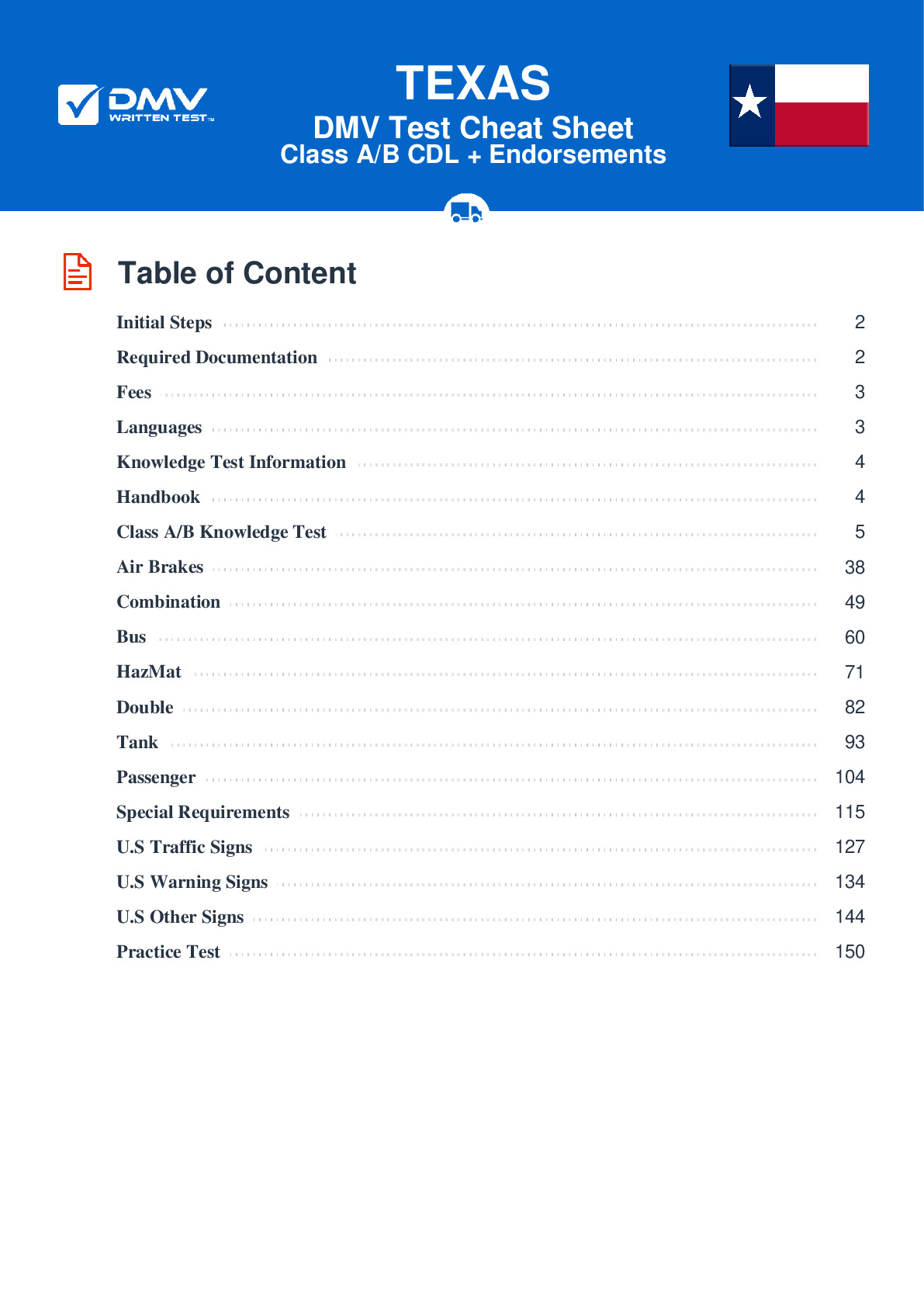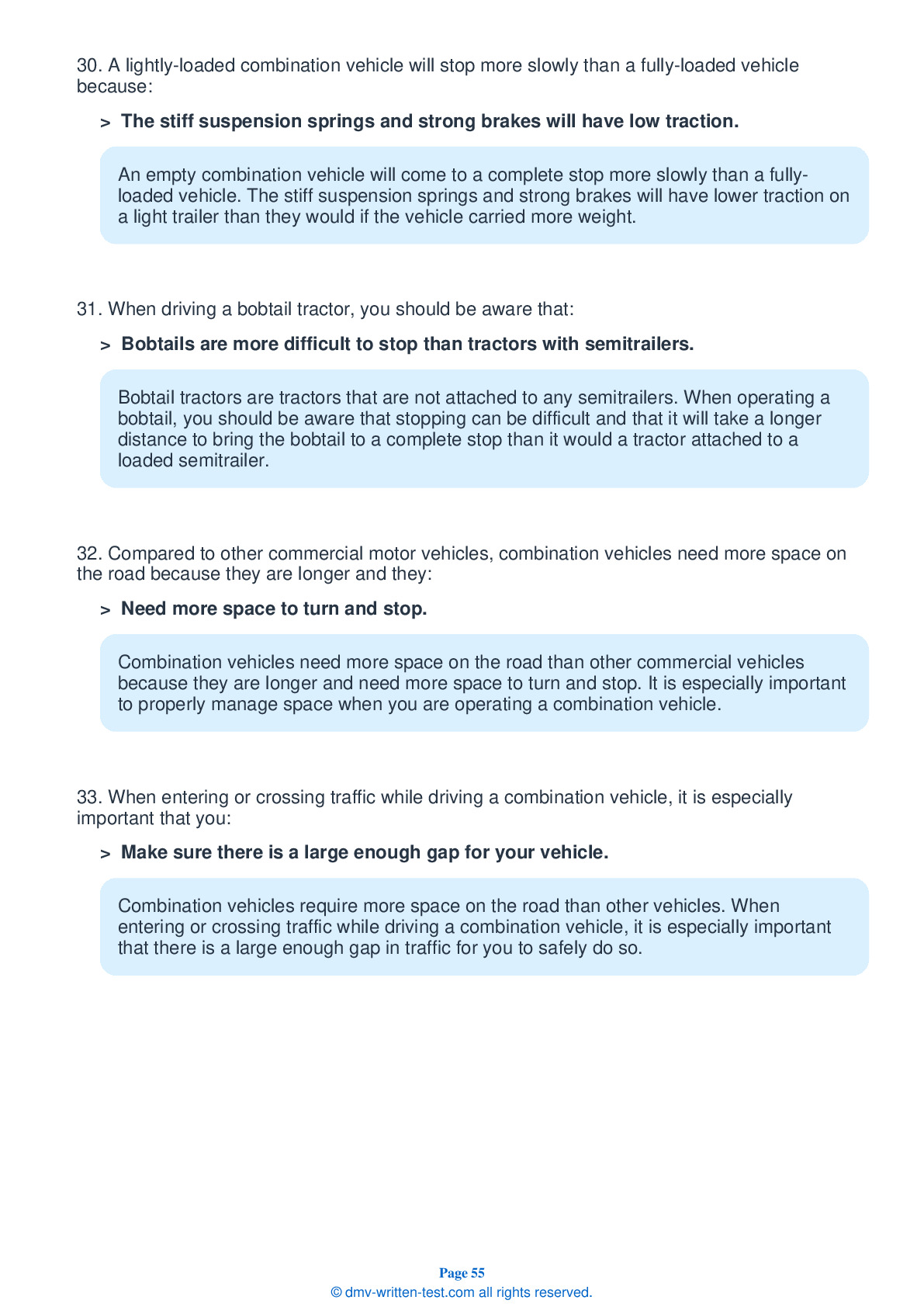Air Brakes
This endorsement is required for driving a vehicle with air brakes. To receive this endorsement, applicants must pass a test. The test consists of 25 multiple choice questions. Each question has four answer choices. To pass, the applicant must answer at least 20 questions correctly. Test questions come from the Texas Commercial Motor Vehicle Drivers Handbook. Questions come from chapters covering: Air Brakes. The Air Brakes endorsement may be used with the Class A, B or C CDL.
Number of Question
Passing Score
1. What kind of force must emergency brakes use?
Explanation
Because air pressure can eventually leak away, the emergency brakes in an air brake system must be held on by mechanical force.
2. Which of the following is not a part of an air brake system?
Explanation
Air brakes consists of three separate braking systems: the service brake system, the parking brake system, and the emergency brake system.
3. If the low pressure warning light comes on while you are driving:
Explanation
If the low air pressure warning light turns on, you should stop and safely park your vehicle as soon as possible. Controlled braking will be possible only as long as enough air remains in the tanks.
4. When you need to stop in an emergency, you should:
Explanation
If you need to make an emergency stop, you can use either the controlled braking method or the stab braking method. It's important to brake in a way that keeps your vehicle traveling in a straight line while still allowing you to turn, if necessary.
5. Emergency brakes:
Explanation
All trucks, truck tractors, and buses must be equipped with emergency brakes and parking brakes. These brakes must be held by mechanical force.
6. Truck tractors with air brakes built on or after March 1, 1997 must have:
Explanation




